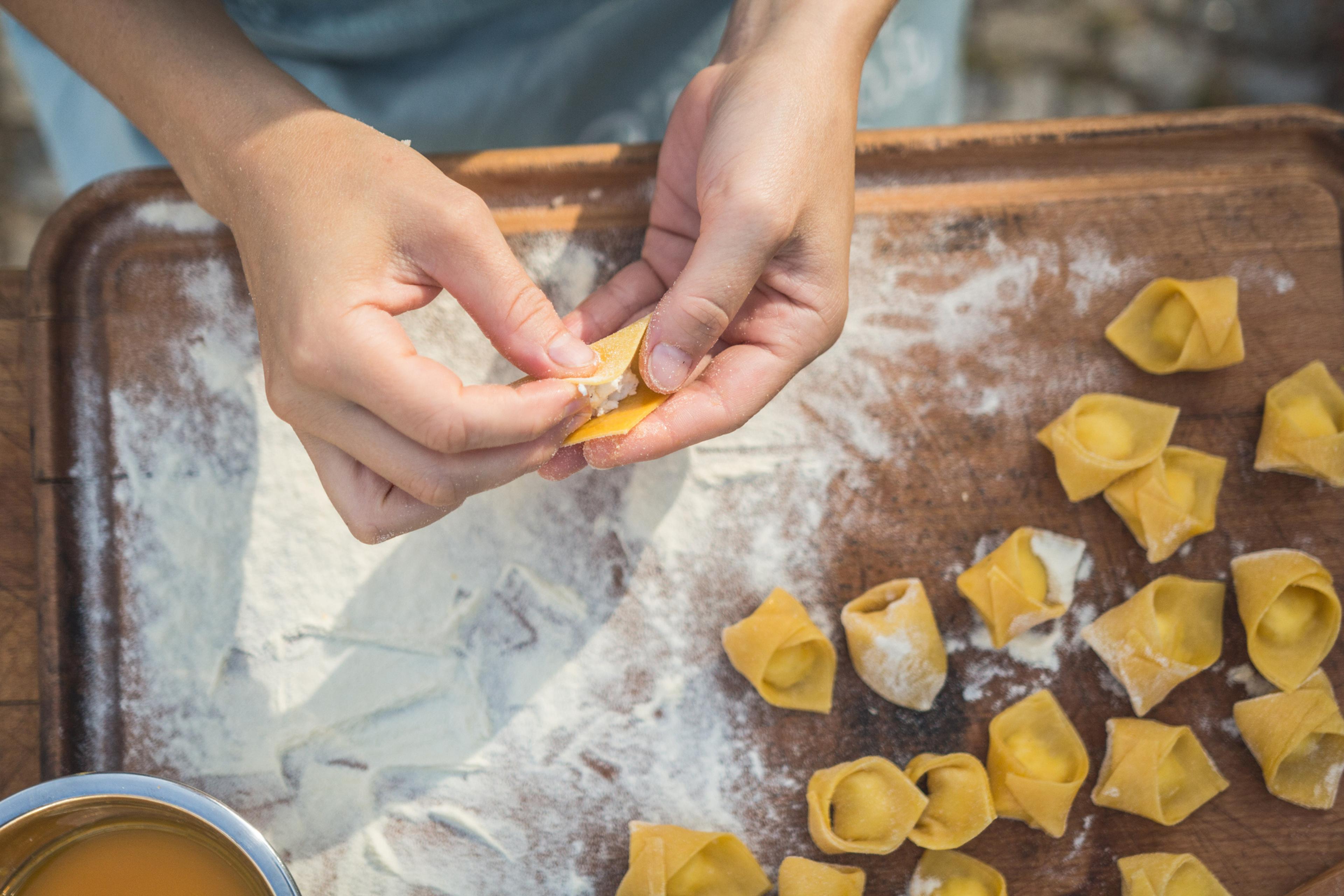How to Cook Tortellini

| 2 min read

How To Cook Fresh Tortellini
Total Time:
25 minutes
Prep Time:
20 minutes
Cooking Difficulty:
Medium
Serving Amount
Ingredients
3 cups flour
4 eggs
1 tsp. salt
3 cups filling of choice
Instructions
Step 1
Fill a large pot with water and bring to a rapid boil over high heat.
Step 2
Once boiling, add salt, then spoon or ladle the tortellini slowly into the water. Add salt to the water according to preference and health needs.
Step 3
Stir gently to prevent the pasta from sticking together. Fresh pasta might be done and floating in 2-3 minutes, depending on the filling and amount. It should not take more than 5 minutes for fresh tortellini to fully cook.
Step 4
Cook the tortellini until it is al dente. It should be tender and still have a slight bite to it, but not mushy.
Step 5
Drain the water and serve tortellini or use in a recipe as desired.
How to Cook Dry Tortellini
Total Time:
15 minutes
Prep Time:
5 minutes
Cooking Difficulty:
Easy
Serving Amount
Ingredients
water
1 package of dry tortellini
salt, if desired
Instructions
Step 1
Fill a large pot with water and bring to a rapid boil over high heat.
Step 2
Once boiling, add salt, then spoon or ladle the tortellini slowly into the water.
Step 3
Add salt to the water according to preference and health needs. Cook the tortellini for 5 to 8 minutes or until the pasta is floating. Stir gently to prevent the pasta from sticking together. Dry pasta takes a little longer than fresh pasta depending on the filling and amount. It can take as long as 10 to 12 minutes depending on the time but check it at 5 minutes and then again at 8. The pasta is done when it floats to the top.
Step 4
Cook the tortellini until it is al dente. It should be tender and still have a slight bite to it, but not mushy.
Step 5
Drain the water and serve tortellini or use in a recipe as desired.





